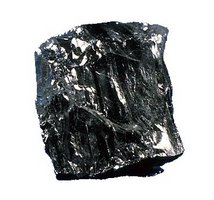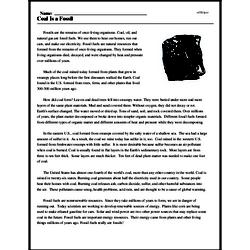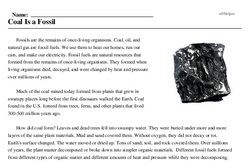Coal Is a Fossil
Fossils are the remains of once-living organisms. Coal, oil, and natural gas are fossil fuels. We use them to heat our homes, run our cars, and make our electricity. Fossil fuels are natural resources that formed from the remains of once-living organisms. They formed when living organisms died, decayed, and were changed by heat and pressure over millions of years.
Much of the coal mined today formed from plants that grew in swampy places long before the first dinosaurs walked the Earth. Coal found in the U.S. formed from trees, ferns, and other plants that lived 300-500 million years ago.
How did coal form? Leaves and dead trees fell into swampy water. They were buried under more and more layers of the same plant materials. Mud and sand covered them. Without oxygen, they did not decay or rot. Earth's surface changed. The water moved or dried up. Tons of sand, soil, and rock covered them. Over millions of years, the plant matter decomposed or broke down into simpler organic materials. Different fossil fuels formed from different types of organic matter and different amounts of heat and pressure while they were decomposing.




